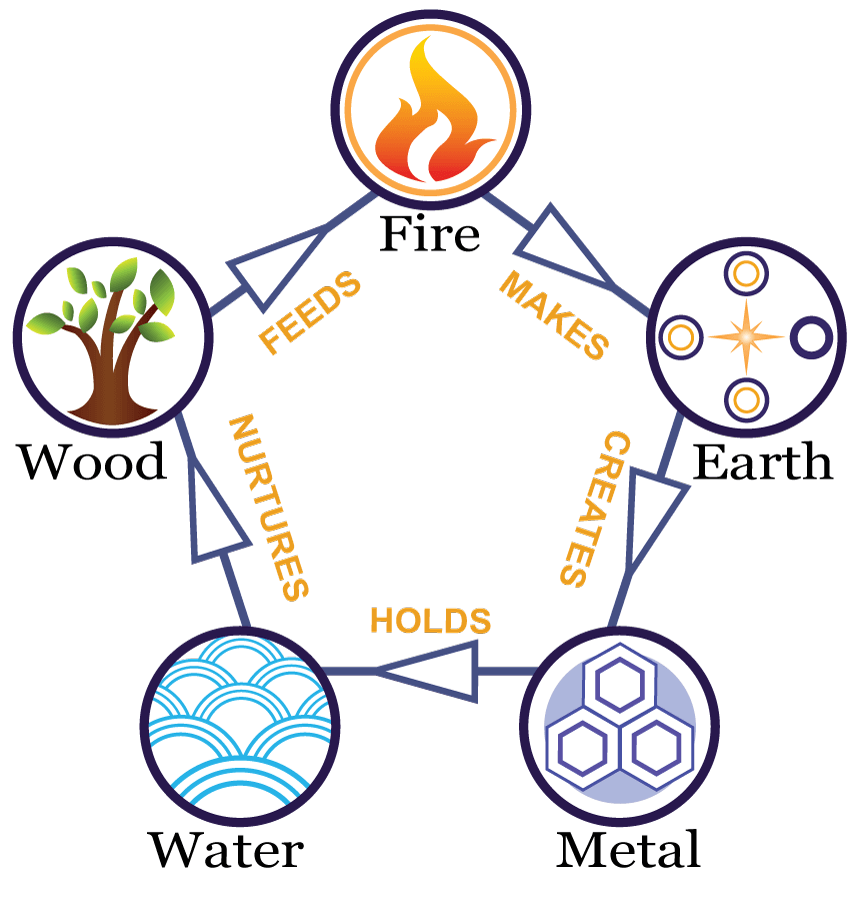The Five Element Theory of Traditional Chinese Medicine

Together with the Yin-Yang theory, the Five Element Theory forms the basis of Traditional Chinese Medicine theory, diagnosis, and treatment.
Traditional Chinese medicine was based on an observation of man in his environment. In early times Chinese doctors identified patterns of continuous change and transformation in the universe and how these changes also occurred within the human body. The concept of chi, the vital energy of the body and the Yin-Yang theory, which views the relationships between things as complementary to the whole, are integral to the master blueprint of the Five Element Theory. This blueprint organizes all natural phenomena into five master groups or patterns in nature.
The five groups include: Wood, Fire, Earth, Metal, and Water. Each of these elements includes many “categories such as a season, a direction, climate, stage of growth and development, internal organ, body tissue, emotion, aspect of the soul, taste, color, sound…” the list is seemingly endless. This theory gives a template to show “how nature interacts with the body and how the different dimensions of our being impact each other.” It gives a multidimensional view and provides a diagnostic framework to identify where imbalances lie.
We are in the season of spring which is the Wood Element.
- The Liver and Gallbladder are associated organs
- Eyes and tendons are associated body parts
- The emotion of anger
- The color green
- Wind
- Calling sound
- Sour taste
- The direction is east
- 11pm – 3am -time
When the Wood chi is weak, indecision and a feeling of being stuck can occur. People who have a strong wood energy have clear goals and vision and can manifest their goals. Planning and decision making are their forte.


